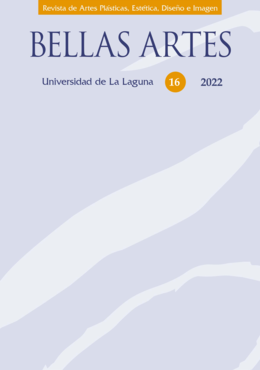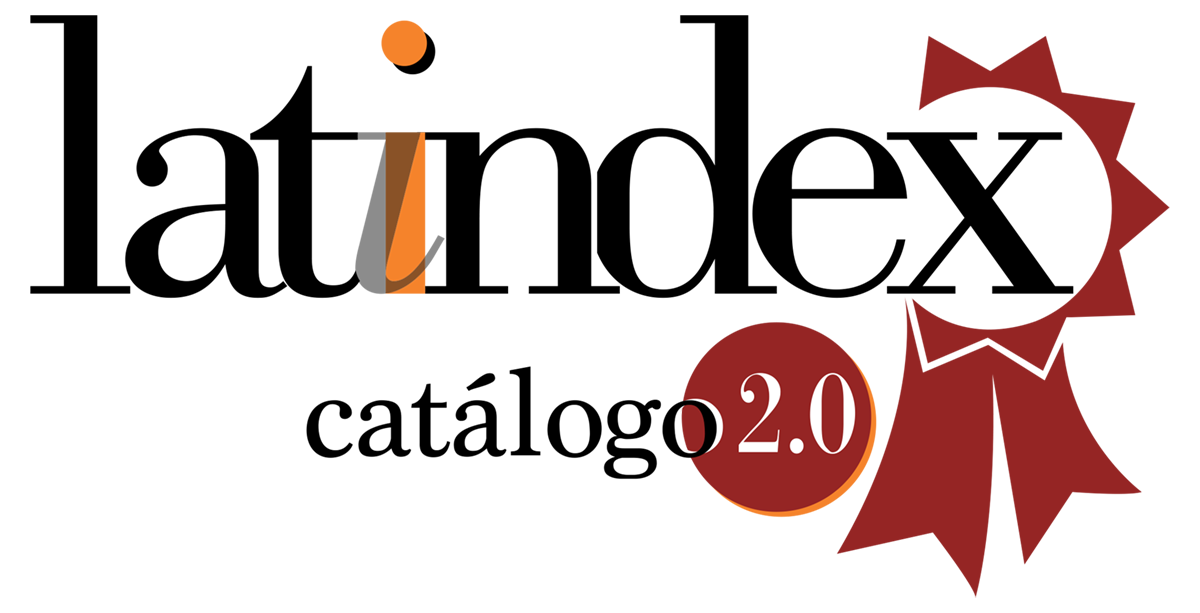Practice is Thought
Emotional, Participation, Trans-knowledge and Introception in Artistic Research Processes in University Training Stages
Abstract
The involvement of emotional processes aimed at understanding the ideas, personal discourses and methods linked to artistic creation and research is a necessity in the university training stages. The existing gap between emotional participation and cognitive processes, as well as their pre-eminence of the latter and the excessive normalization of research systems and personal project elaboration methodologies, provoke impositions of roles unrelated to artistic creation - research, complicating the message and distancing it, on many occasions, from the original thought and interests of the artist. This article tries to reflect on these
aspects observed from outside and from within the academic spheres in their university stage, trying to show the relevance that they must acquire: the previous background; participatory perception; process visualization; experimentality; and fundamentally reflective methods, introception and dialogue in research processes in this genuine field of knowledge.
References
Alfaro Barrantes, M. «La educación de la mente y el conocimiento de las disciplinas de Howard Gardner», Revista Umbral, año 2, n.o 2 (2002). Ed. Universidad Nacional Pedro Luis Gallo. Lambayeque. http://sisbib.unmsm.edu.pe/BibVirtualdata/publicaciones/umbral/v02_n02/a23.pdf (consultado el 30 de septiembre de 2016).
Arañó Gisbert, J.C. «Salir de las tinieblas. Curiosidad y prospectiva ante la investigación en Artes». Tercio Creciente 2, (2012): 13-26, http://www.terciocreciente.com (consultado el 15 de junio de 2022).
Blanco Arroyo, María A. «El paisaje transformado: Un enfoque multidisciplinar a través de la fotografía contemporánea», tesis doctoral, Universidad de Sevilla, 2015.
Becker, Carol. Surpassing the spectacle: Global transformations and the changing politics of art. New York: Rowman & Littlefield, 2002.
Belting, Hans. Antropología de la Imagen. Buenos Aires: Katz editores, 2007.
Bénichou, Anne. Between the Frames: The Forum 1983-1993. Barcelona: MACBA, 2011.
Beuys, Joseph. Ensayos y entrevistas. Madrid: Síntesis, 2006.
Bod, R., Maat, J. y Westseijn, T. The Making of Humanities. Vol i. Amsterdam: Amsterdam University Press, 2010.
Campos, G., y Lule, Nallely E. «La observación. Un método para el estudio de la realidad». Rev. Xhimai vii (13), (2012): 45-60 https://dialnet.unirioja.es/descarga/articulo/3979972.pdf (consultado el 12 de octubre de 2016).
Calle, Ramiro. El Zen. Contado con sencillez. Madrid: Ed. Maeva, 2005.
Camnitzer, Luis. «Pensamiento crítico Sevilla», en Transformaciones. Arte y estética desde 1960, 2.a edición, CAAC. Sevilla (2007), en http://www.caac.es/descargas/transf08_07.pdf (consultado el 12 de diciembre de 2014).
Cassini, Alejandro. «Modelos, idealizaciones y ficciones: Una crítica del ficcionalismo». Principia 17(3): 345–364: (2013), file:///Users/santiagonavarro/Desktop/EVA/Downloads/Dialnet-ModelosIdealizaciones-5251348.pdf (consultado el 22 de febrero de 2022).
Gadamer, Hans Georg. Verdad y método. Salamanca: Ed. Sígueme, 2005.
Echevarria Plazaola, J. «Espacio receptivo y emoción estética. El espectador ante la obra de Jorge Oteiza». Postdoc-Fellow. Universität der Künste Berlin. (2007): 1-14, en http://www.um.es/vmca/download/docs/jon-echeverria-plazaola.pdf (consultado el 9 de septiembre de 2016).
Fischli, Peter y Weiss, David «How to work better», https://www.guggenheim.org/exhibition/peterfischli-david-weiss-how-to-work-better (consultado el 1-9-2016).
Galindo Mateo, I., Martín Martínez, J.V. Atenea en el campus. Una aproximación a las bellas artes como disciplina universitaria. Valencia: Universidad Politécnica de Valencia, 2007.
García, Daniel I. «Bolonia en la Encrucijada» en Actas del Congreso Calidad, Docencia Universitaria y Encuestas: Bolonia a coste cero. 17-32. Sevilla: Asociación de mujeres laboristas de Andalucía (AMLA), Universidad de Sevilla, 2016, en http://hdl.handle.net/11441/45226 (consultado el 12 de octubre de 2016).
Gardner, Howard. Inteligencias múltiples. La teoría en la práctica. Barcelona: Paidos, 1998.
Graeme, Sullivan. Art Practice as research: inquiry in the visual arts. California: Sage Publications, Inc. Thousand Oaks, 2005.
Guerra de Hoyos, Carmen. El territorio como «demo»: demo(a)grafías, demo(a)cracias y epidemias. Sevilla: UNIA, 2010.
Inteligrancia Emocional Blog, https://blogs.eitb.eus/inteligenciaemocional/2008/11/25/sentidosy-sentimientos/ (comentario enviado el 25 de noviembre de 2008).
Imaz Urrutikietxea, I. «La idea metodológica en la enseñanza del arte», en Academia https://www.academia.edu/2335750/La_idea_metodológica_en_la_enseñanza_del_Arte (consultado el 10 de junio de 2022).
Jipson, J., Paley, N. (eds.). Daredevil Research: Recreating Analytic Practice. New York: Peter Lang, 1997.
Ballesteros Jose Blog, http://arqueologiadelfuturo.blogspot.com.es/2009/09/la-evolucion-seguncharles-jencks.html (comentario enviado el 17 de septiembre de 2009).
Kaprow, Allan. Essays on tite blurring of the art and life. Berkeley: University of California Press, 1993.
Klein, Julian. «What is artistic research?». Berlin-Brandenburgische Akademie der Wissenschaften (2010): s/n en PDFSlide https://pdfslide.net/documents/klein-what-is-artistic-research.html (consultado el 19 de junio de 2022).
Martínez Moro, Juan. Crítica de la razón plástica. Método y materialidad en el arte moderno y contemporáneo. Gijón: Ediciones Trea, 2006.
Noguera Tur, J. «Oportunidad, posibilidad e imposibilidad de las transformaciones que propone el sistema de Bolonia. Una experiencia desde la geografía». Cuad. De Geogr. 76 (2006): 252-271, en Dialnet https://dialnet.unirioja.es/descarga/articulo/1961514.pdf (consultado el 12 de octubre de 2016).
Oteiza, Jorge de. Escultura de Oteiza: Propósito experimental 1956-57. Alzuza, Navarra: Ed. Jorge Oteiza Fundazio Museoa, 2007.
Pérez Barco, María José. «Finlandia ya no quiere asignaturas en clase». Diario ABC, 27.03 (2015), http://www.abc.es/familia-educacion/20150327/abci-finlandia-propuesta-noasignaturas-201503261404.html (consultado el 14 de octubre de 2016).
Redmond, T.A., Luetkemeyer, J., Davis, J., Hash, P., & Adams, T. (2021). «Creating space for care: Sustaining the emotional self in higher education», en I. Ruffin & C. Powell (Ed.), The emotional self at work in higher education (pp. 120-145). IGI Global, http://doi:10.4018/978-1-7998-3519-6.ch007 (consultado el 3 de noviembre de 2022).
Robinson, K. «Creativity and changing Educational Paradigms», en Transformation. TED2006. https://www.ted.com/talks/ken_robinson_changing_education_paradigms (consultado el 8 septiembre de 2016).
Sperling, D., Lopes de Souza Santos, F., Martínez Soto, M.C. «Atención. La percepción requiere participación». Rev. RISCO de pesquisa em arquitetura e urbanismo, vol. 4-2 (2006), http://www.iau.usp.br/revista_risco/Risco4-pdf/trans_3_risco4.pdf (consultado el 22 de noviembre de 2016).
Sullivan, Graeme. «Art practice as research: Inquiry in the visual arts.» Thousand Oaks, CA: SAGE. (2005), en http://www.ijea.org/v7r3/v7r3.pdf (consultado el 29 de septiembre de 2016).
Thompson, Christina. «Art practice as research: A review essay». International Journal of Education & the Arts, 7 (Review 3). (Champaigm, USA: Tom Barone, Arizona, 2006) 4-19, en http://www.ijea.org/v7r3/v7r3.pdf (consultado el 29 de septiembre de 2016).
UNESCO. «Hoja de Ruta para la Educación Artística». Conferencia Mundial sobre la Educación Artística: construir capacidades creativas para el siglo xxi Lisboa, 6-9 de marzo de 2006: 3, en https://bibliotecadigital.mineduc.cl/bitstream/handle/20.500.12365/17662/24_hoja%20de%20ruta_EduArt.pdf?sequence=1&isAllowed=y (consultado el 28-12-2016).
The works published in this journal are the property of their respective authors, who grant the journal Bellas Artes the right of first publication, as stated in our Authorship Rights Policy.




